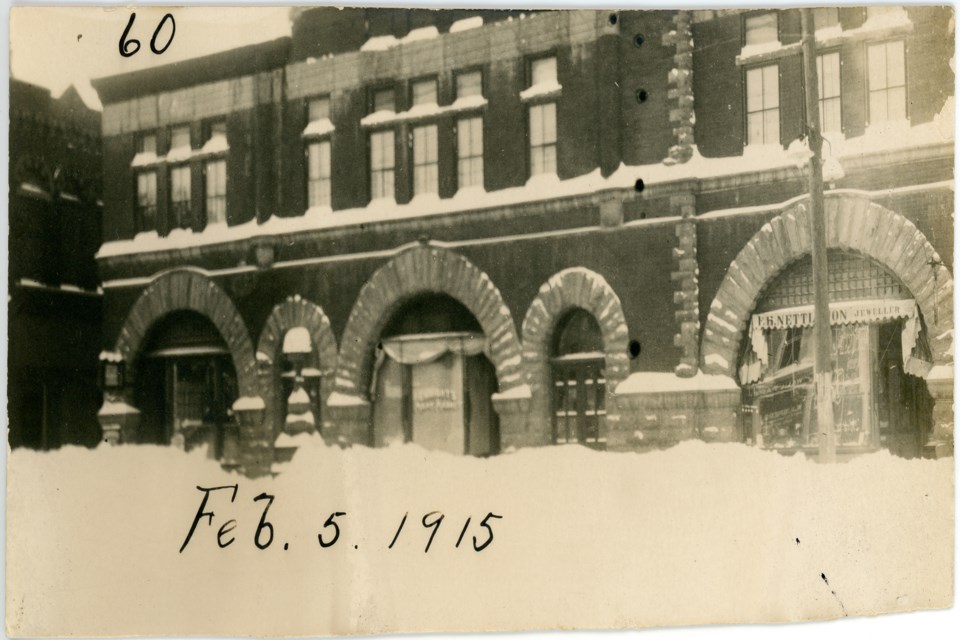This article has been edited from a previous version to correct an error. CollingwoodToday apologizes for the error.
Collingwood’s distinctive town hall is immediately identifiable by a number of features such as its clock tower and limestone arches.
It was built in 1891 under the supervision of architect J. Wilson in the Romanesque Revival style, which characteristically included stone arches and red brick.
This week’s Remember This photograph was taken on Feb. 5, 1915, there was a bell tower, but the four-faced clock wasn’t installed until 1951. At the time it was built, the building housed the municipal offices, an opera house, a courthouse and storefront retail spaces.
Nettleton’s Jewellery is visible within the arch on the right side of the photograph and was located at this location until 1962. Today, the office of Collingwood’s CAO is located here. The large arch at the building’s centre is the town hall’s present-day entrance, and the large arch on the building’s left side is the current office location of Mayor Sandra Cooper.
A tall water fountain is visible in the photograph between the left and centre arches rising from the snow. The fountain was a gift to the Town of Collingwood by the Women's Christian Temperance Union, and featured three drinking levels: the top for people, middle for horses, and the bottom for dogs. The details regarding the removal of the fountain from the main street are largely unknown. However, it’s believed that it may have been offered to a scrap metal drive during the Second World War.
Remember This is a weekly series of historic photographs submitted by the Collingwood Museum to CollingwoodToday.ca. These photographs were originally collected and documented by the Huron Institute in an historical catalogue entitled Huron Institute Paper and Records: Volume III. Much of Collingwood’s early history has been preserved due to the dedication and foresight of the early museum’s founders, namely its secretary-curator David Williams, upon its establishment in 1904.



